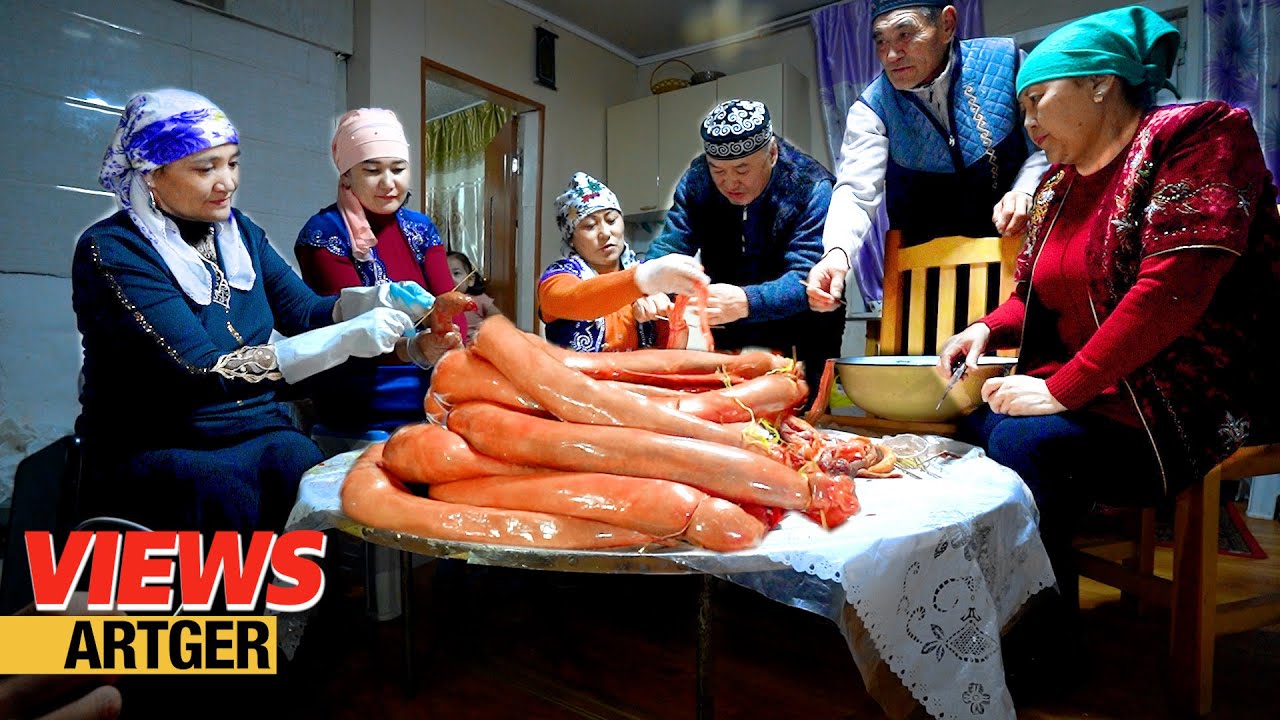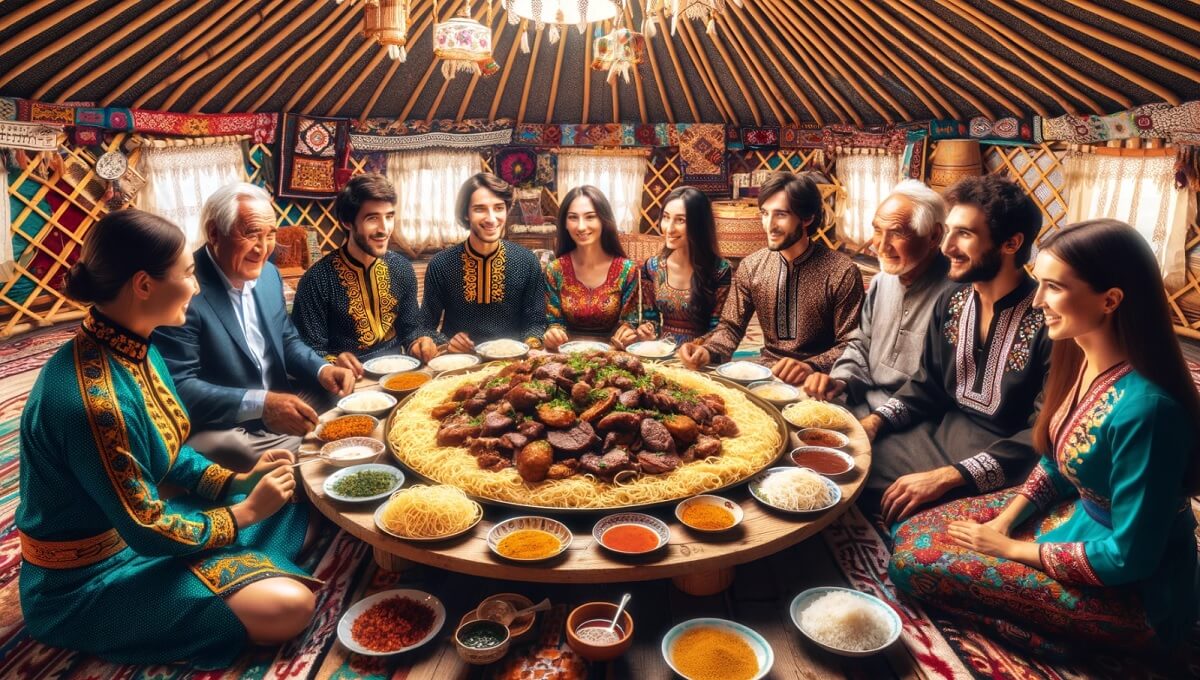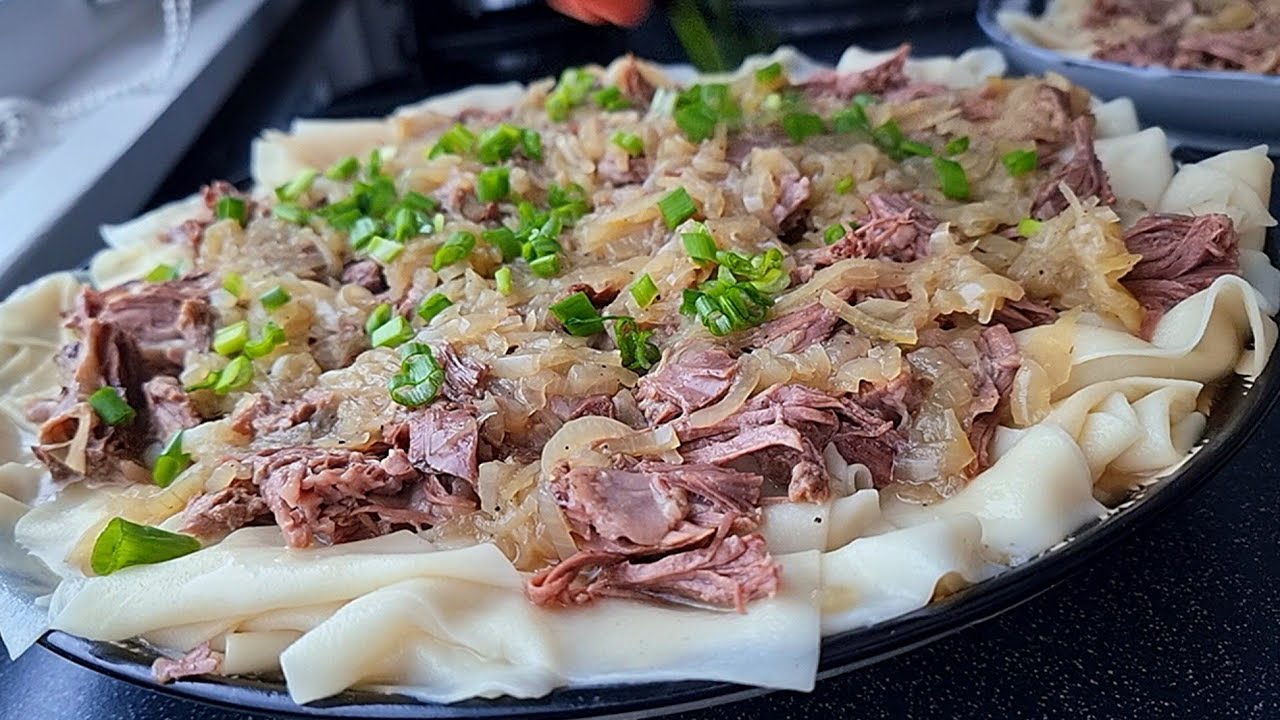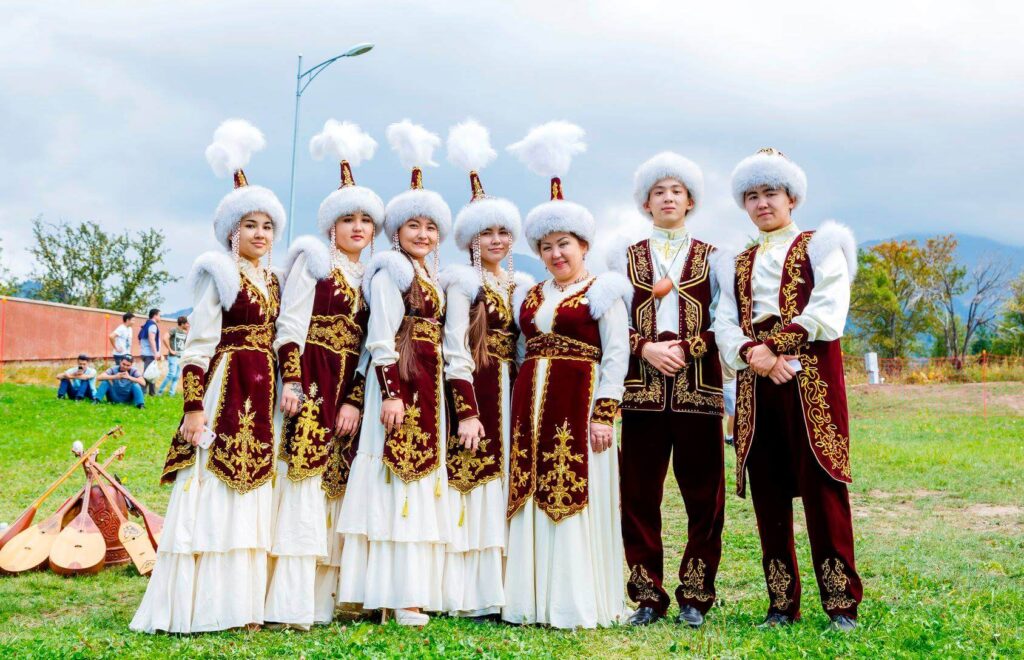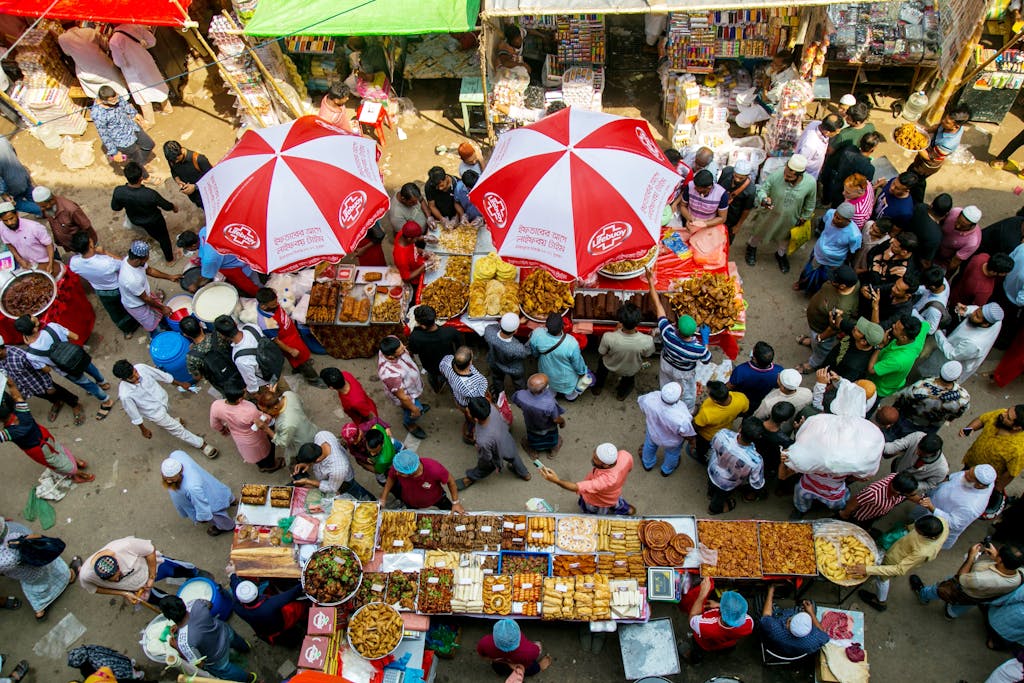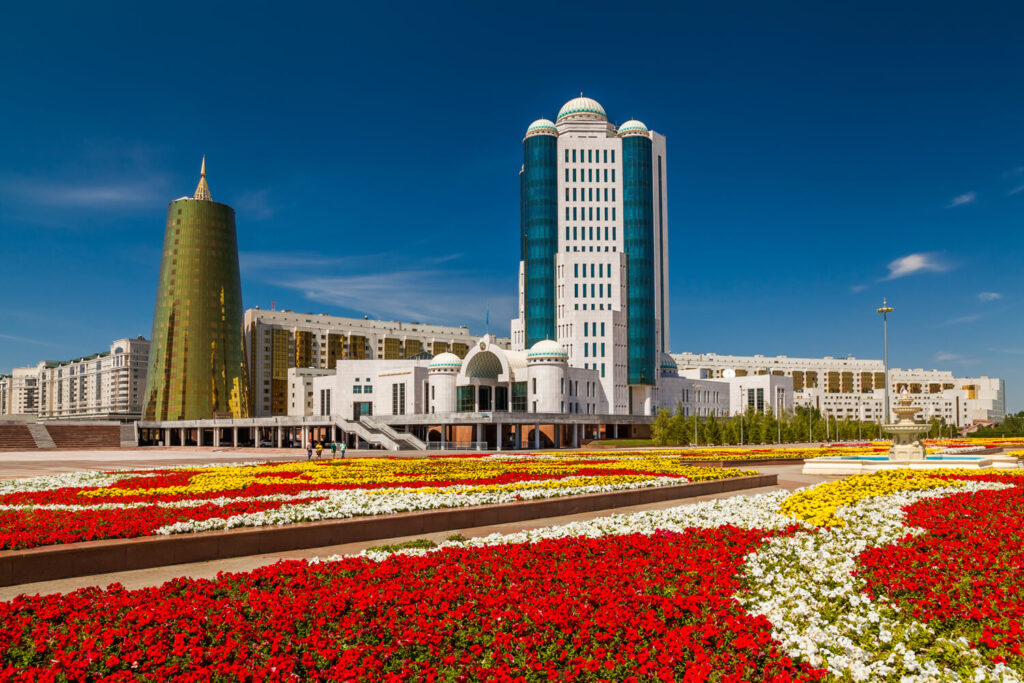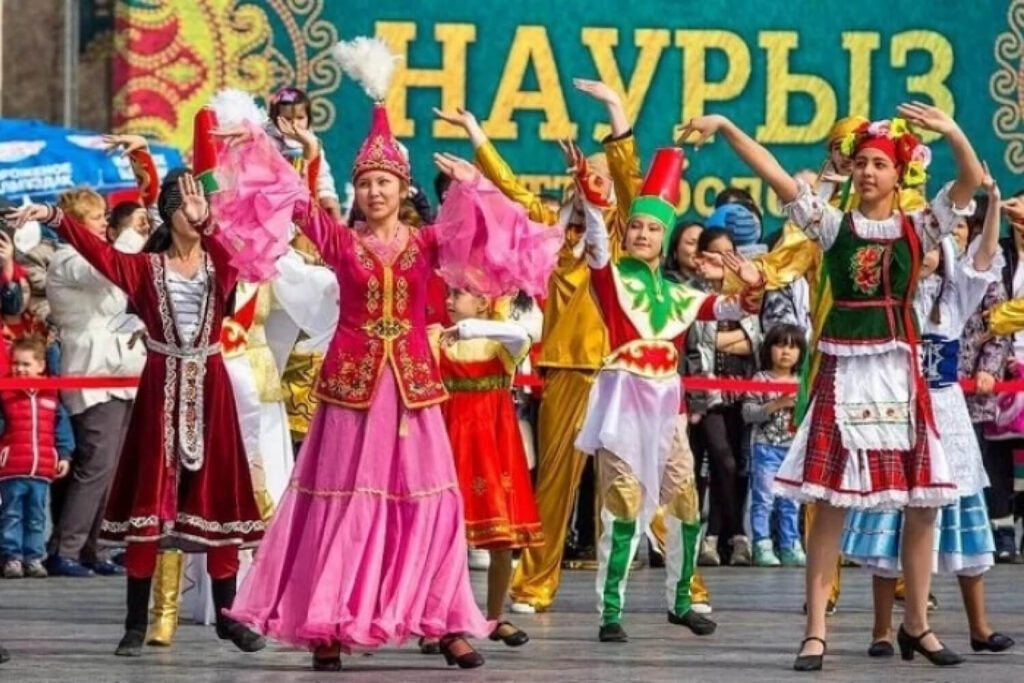Kazakhstan food culture: Kazakhstan’s food culture is a rich tapestry woven from its nomadic traditions, historical influences, and the diverse ethnic groups that inhabit the country.
Traditional Dishes
Beshbarmak
- Description: Often considered the national dish, beshbarmak means “five fingers,” referring to the traditional way of eating it by hand.
- Ingredients: It consists of boiled meat (usually lamb or beef) served over wide pasta and topped with onion sauce. It’s often accompanied by a rich broth called “sorpa.”
- Cultural Significance: Beshbarmak is typically served during special occasions and family gatherings, symbolizing hospitality and community.
Kazy
- Description: Kazy is a traditional sausage made from horse meat, often considered a delicacy in Kazakhstan.
- Preparation: The meat is seasoned, stuffed into natural casings, and then smoked or boiled.
- Cultural Significance: Kazy is often served at weddings and festive occasions, highlighting the importance of horse culture in Kazakh life.
Discover Kazakhstan
Plov
- Description: A popular rice dish that varies across regions, plov is a Central Asian staple.
- Ingredients: It typically includes rice, meat (usually lamb or beef), carrots, and spices. Each region may have its variations, with some adding dried fruits or nuts.
- Cultural Significance: Plov is often served at celebrations and communal gatherings, symbolizing abundance and friendship.
Samsa
- Description: These are savory pastries filled with meat, onions, and spices, baked in a tandoor (clay oven) or regular oven.
- Variations: They can be made with lamb, beef, or even pumpkin for vegetarian options.
- Cultural Significance: Samsa is a popular street food and is often enjoyed with tea, representing everyday Kazakh life.
Dairy Products
Kumis
- Description: Kumis is a traditional fermented drink made from mare’s milk.
- Preparation: The milk is fermented in special containers and has a slightly sour taste with a hint of alcohol.
- Cultural Significance: Kumis is considered to have health benefits and is an integral part of the nomadic lifestyle, often consumed during meals or as a refreshment.
Shubat
- Description: This is fermented camel milk, known for its unique taste and health benefits.
- Cultural Significance: Shubat is a traditional drink in regions where camels are raised, reflecting the adaptation to local resources.
Ayran
- Description: Ayran is a yogurt-based drink made by mixing yogurt, water, and salt.
- Cultural Significance: It’s a refreshing beverage enjoyed in the summer and complements many dishes, especially meat-based meals.
Breads and Pastries
Lepeshka
- Description: This traditional flatbread is baked in a tandoor and has a crispy crust.
- Cultural Significance: Lepeshka is a staple in Kazakh meals, often served with soups, stews, or as a side to main dishes.
Baursaks
- Description: These are fried dough balls that are soft and fluffy, often served as a snack or dessert.
- Cultural Significance: Baursaks are commonly served at celebrations and family gatherings, symbolizing warmth and hospitality.
Tea Culture
- Description: Tea is an essential part of Kazakh hospitality. Black tea is the most common, often served with sugar, milk, or jam.
- Cultural Significance: The tea-drinking ritual involves serving guests with warmth and is an important aspect of social gatherings. It is common to serve sweets or pastries alongside tea.
Discover Kazakhstan
Influences and Variations
Kazakhstan’s food culture has been shaped by various influences due to its location along the Silk Road and its history of diverse ethnic groups, including Russians, Uighurs, and Tatars. This has resulted in a unique fusion of flavors and cooking styles, seen in dishes like:
- Borscht: A beet soup influenced by Russian cuisine, often served with sour cream.
- Manti: Dumplings filled with meat, influenced by Central Asian and Turkic culinary traditions.
Cultural Significance of Food
Food in Kazakhstan goes beyond sustenance; it represents identity, hospitality, and community. Meals are often communal, with an emphasis on sharing and celebrating together. Traditional dishes are prepared with care and are integral to various rituals and ceremonies, reflecting the importance of family and social bonds.
Festivals and Celebrations
Kazakh food culture comes alive during festivals such as Nauryz, the spring equinox celebration, where traditional dishes are prepared in abundance to symbolize renewal and prosperity. Special foods like pilaf and sweet pastries are prepared to mark the occasion.
Conclusion
Kazakhstan’s food culture is a rich reflection of its history, geography, and social values. With its focus on hospitality, community, and the use of local ingredients, the culinary traditions offer a delicious way to experience the country’s heritage. Whether savoring a hearty dish of beshbarmak or enjoying a cup of kumis, the flavors of Kazakhstan tell a story of resilience, tradition, and cultural pride.








